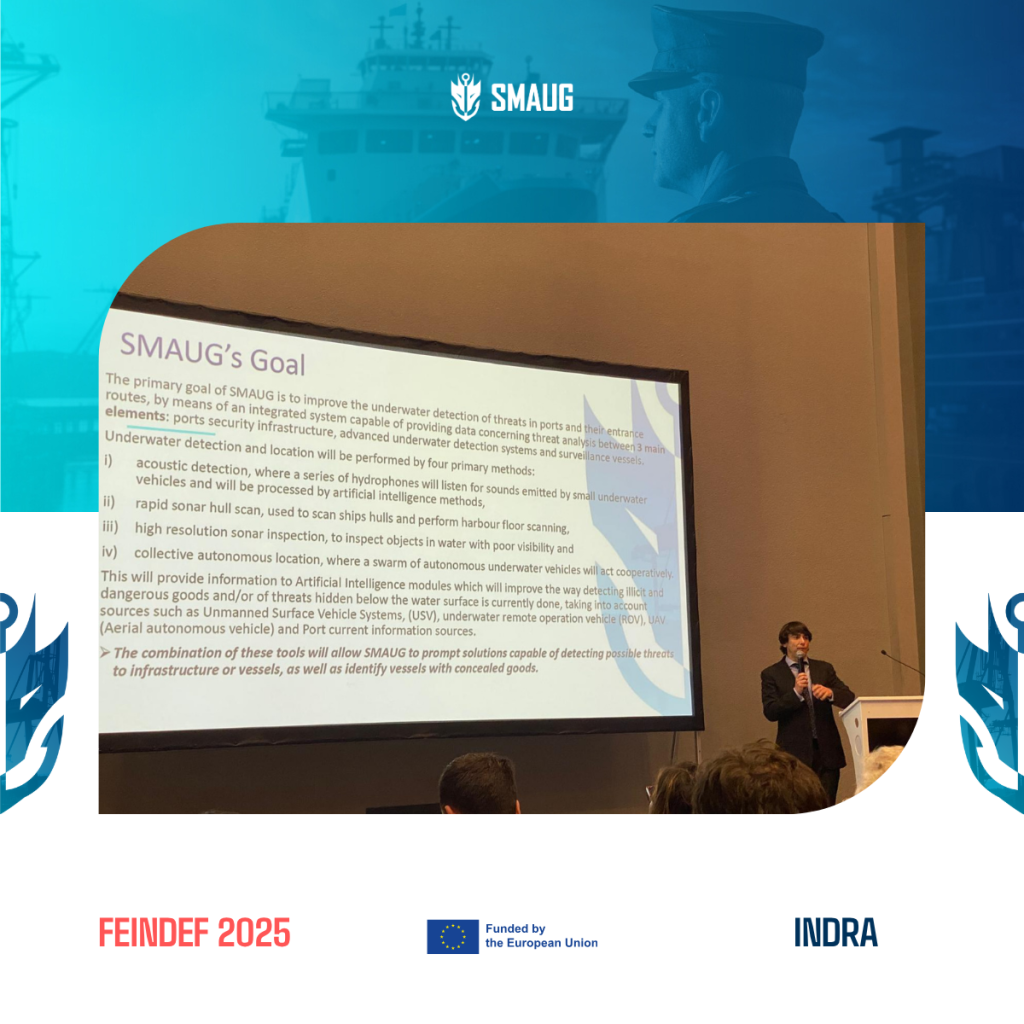SMAUG Project at the FEINDEF 2025
On Tuesday, May 13th, the SMAUG project took center stage at the International Defence & Security Exhibition (FEINDEF) 2025 in Madrid, Spain. The presentation occurred during the Cluster 3 Infoday and Brokerage Event, on “Civil Security for Society“, within the Horizon Europe framework program of the European Commission.
Throughout the day, the project’s objectives, its process and research activities, and its significance at both the EU and national levels were highlighted. The project’s coordinator, Juan-Román Martínez Arranz, presented the project addressing several key aspects such as:
- The importance of the consortium, with particular emphasis on the role of end-users such as ports and coastal border guards. One of the project’s defining characteristics is its powerful consortium. Particular emphasis was placed on the role of end-users, including port authorities and coastal border guard agencies, who are key to shaping relevant, operational use cases. The involvement of these stakeholders ensures that the solutions developed will have real-world applicability and impact.
- The definition of the use cases included in the proposal, notably how Use Case 3 (UC3) was developed in response to the Nord Stream incident during the offer phase.
- The contribution of technology partners, showcasing the innovative technologies integrated into the project and their critical role in its development. Artificial Intelligence capabilities developed by Indra, Universidad Politécnica de Madrid, and Vicomtech. Advanced sensing and monitoring technologies developed from multiple project partners and Command and control (C2) systems such as iSim, developed by Indra.
The security of critical infrastructure in the subsea domain—such as telecommunications cables, oil and gas pipelines, ocean sensors, and submarine platforms—faces multiple challenges due to their strategic importance, remote location, and the increasing complexity of the geopolitical and technological environment.
SMAUG aims to help protect these infrastructures, in addition to improving the detection of narco-submarines, which are designed to avoid radars and sonar, since they use non-metallic materials (such as fiberglass) and operate near the surface, generating a very low thermal, acoustic and visual signature.
Finally, it will lead to an improvement in the security of EU seaports, given that these seaports are key nodes for trade, energy and security, but nevertheless face a wide range of security challenges due to their operational complexity, international connectivity and increasing exposure to physical and cyber threats.
Stay tuned with SMAUG to learn first the project’s news and activities via its social media channels and by subscribing to our newsletter. 








